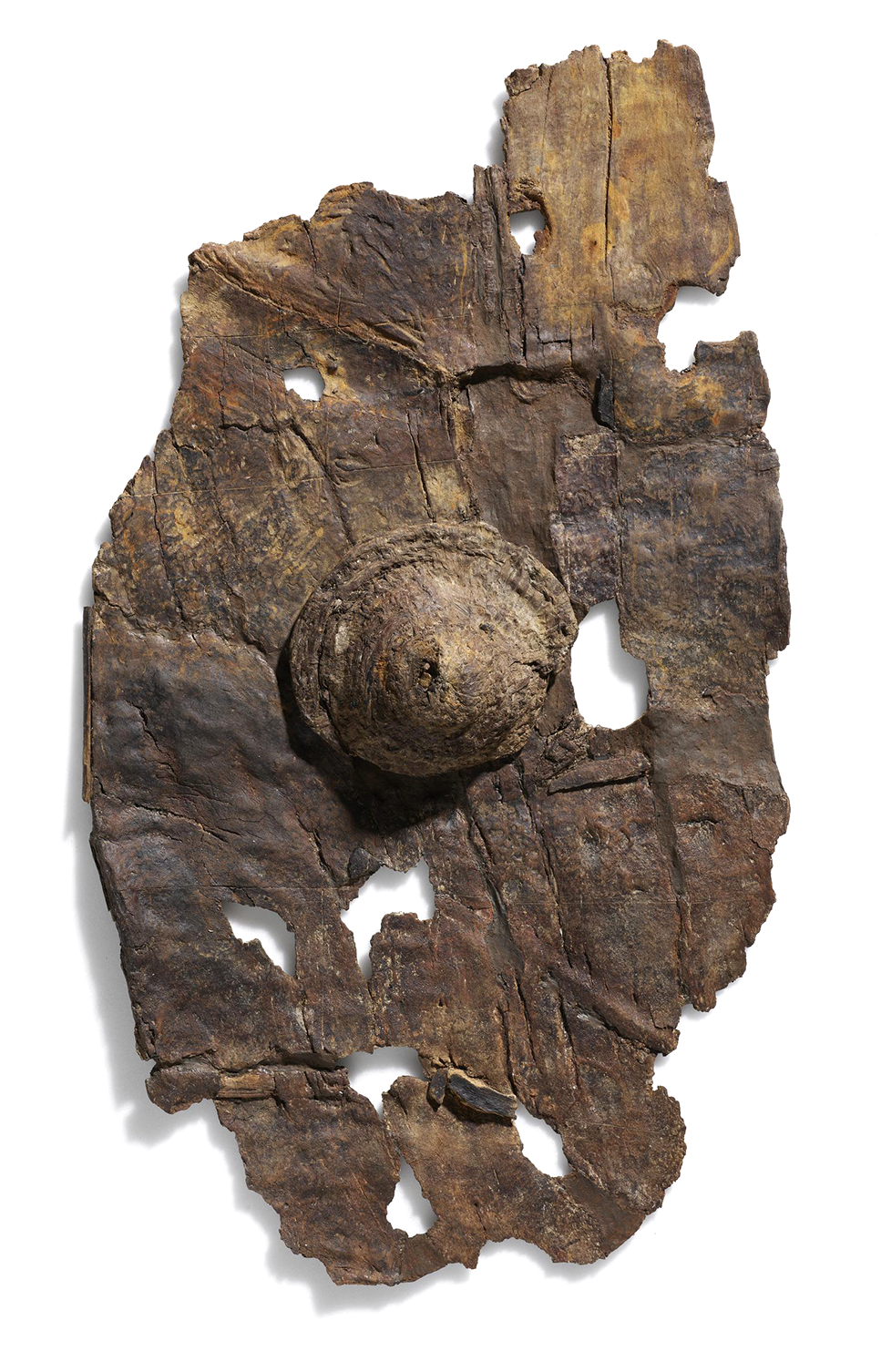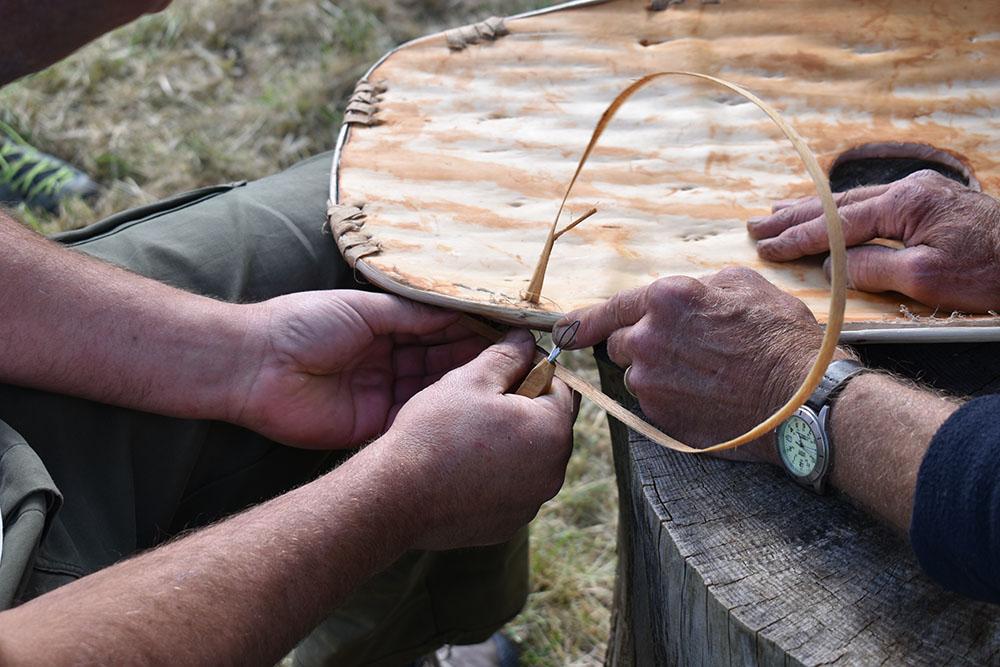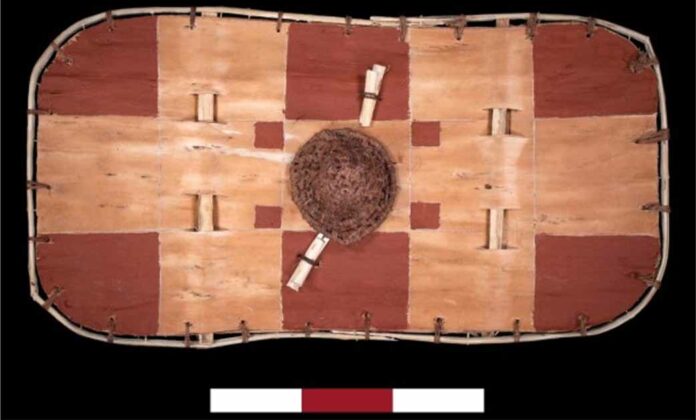In a remarkable discovery that has shed new light on prehistoric craftsmanship, archaeologists have unearthed a 2,300-year-old bark shield at the Iron Age site of Everards Meadows near Enderby, Leicestershire. This artifact, uncovered in 2015, stands out as a one-of-a-kind find, being the only bark shield ever discovered in Europe. The shield’s construction and design reveal a sophisticated understanding of materials and defensive technology during the Iron Age, challenging previous assumptions about the durability and use of bark in ancient times.
A Unique Archaeological Find

The bark shield, which measured 26.3 x 14.6 inches (67 x 37 cm) when it was found, is a truly unique artifact. While bark has been known to be used by prehistoric people for making bowls and boxes, this discovery marks the first known instance of bark being used to create a weapon of war. According to archaeologist Michael Bamforth from the University of York and his colleagues, this shield represents an unprecedented use of materials in prehistoric Europe.
Cutting-Edge Analysis and Reconstruction
To fully understand the construction of the shield, the research team employed several advanced analytical techniques, including CT scanning and 3D printing. These methods allowed them to reconstruct the shield’s original structure and design. The analysis revealed that the shield was meticulously crafted with wooden laths to reinforce the structure, a wooden edging rim, and a beautifully woven boss designed to protect the handle. The exterior of the shield was adorned with red chequerboard decorations, showcasing the artistic skills of its maker.
Materials and Craftsmanship

The detailed examination of the shield’s materials revealed that the bark was sourced from either alder, willow, poplar, hazel, or spindle trees, with the outer layer of bark forming the shield’s interior. The stiffening laths were made from apple, pear, quince, or hawthorn, while the rim consisted of a half-split hazel rod. The boss was crafted from a willow core and was stitched together with flat fibers of grass, rush, or bast fiber. The handle, made from willow roundwood, was flattened at the ends, notched, and secured to the bark with twisted ties.
The outer surface of the shield featured a chequerboard pattern scored into the bark, with portions painted in a red hematite-based pigment. Despite the intricate design, the shield bore signs of severe damage, likely inflicted before its deposition in what is believed to have been a livestock watering hole. One irregular elliptical hole may have been caused by the pointed tip of an iron spear, while other incisions suggest the impact of edged blades.
Radiocarbon dating of the shield has determined that it was crafted sometime between 395 and 255 BC, during the Iron Age. This dating places the shield within a crucial period of prehistoric Britain, offering new insights into the technological capabilities of the time.
A Window into Prehistoric Technology

Dr. Matthew Beamish, an archaeologist from the University of Leicester, emphasized the significance of the discovery, stating, “We have learned a great deal from fragile evidence which could have been so easily overlooked, and the project has been a wonderful collaboration providing a rarely seen glimpse of our prehistoric past.” The discovery of this bark shield has opened a window into prehistoric technology, revealing an innovative use of materials that was previously unimagined.
Reassessing the Strength of Bark Shields
Initially, researchers were skeptical about the effectiveness of a bark shield in battle, given that bark is not typically associated with strength and durability. However, through experimental archaeology, the team discovered that bark could indeed be tough enough to withstand blows from metal weapons. While not as robust as wooden or metal shields, the bark shield’s lighter weight would have provided the user with greater freedom of movement, making it a practical and effective defensive tool.
Conclusion
The discovery of the 2,300-year-old bark shield at Everards Meadows is a testament to the ingenuity and resourcefulness of prehistoric peoples. The shield’s complex structure, intricate decorations, and evidence of use provide a fascinating glimpse into Iron Age Britain. This unique artifact not only challenges previous assumptions about the use of materials in ancient times but also highlights the importance of experimental archaeology in understanding our distant past. As Dr. Rachel Crellin of the University of Leicester remarked, “The first time I saw the shield, I was absolutely awed by it: the complex structure, the careful decorations, and the beautiful boss.” Indeed, this extraordinary find has enriched our understanding of prehistoric technology and craftsmanship in ways that continue to resonate today.
